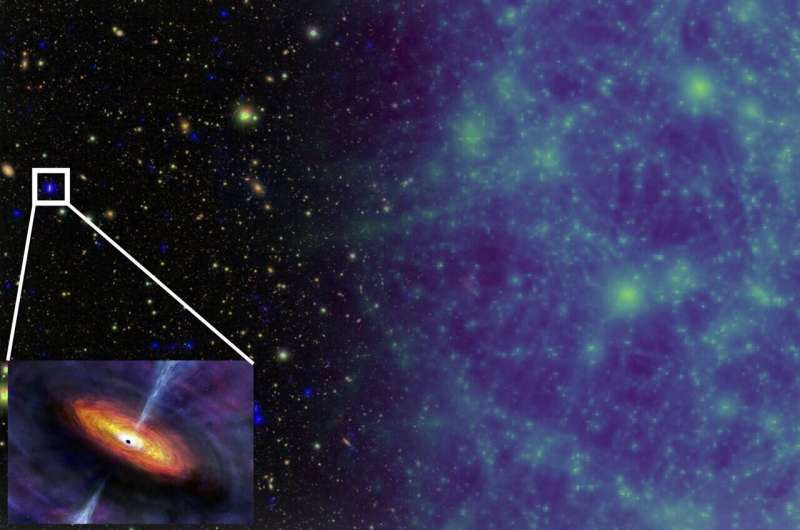Scientists discover more Milky Way-like galaxies in the early universe, advancing our understanding of how galaxies formed


Some of the spiral galaxies studied by the researchers in the study. Credit: Vicki Kuhn
University of Missouri scientists are looking into the past and uncovering new clues about the early universe. Since light takes a long time to travel through space, they are now able to see what galaxies looked like billions of years ago.
In a new study, Mizzou researchers have found that spiral galaxies were more common in the early universe than previously thought. The work appears in The Astrophysical Journal Letters.
“Scientists previously believed that most spiral galaxies developed about 6 to 7 billion years after the formation of the universe,” said Yicheng Guo, an associate professor in Mizzou’s Department of Physics and Astronomy and co-author of the study. “However, our study shows that spiral galaxies were widespread as early as 2 billion years later. This means that galaxy formation occurred faster than previously thought.”
This insight could help scientists develop a better understanding of how spiral galaxies like the Milky Way, Earth’s galaxy, formed over time.
“Knowing when spiral galaxies formed in the universe has been a popular question in astronomy because it helps us understand the evolution and history of the cosmos,” said Vicki Kuhn, a graduate student in Mizzou’s Department of Physics and Astronomy, who directed the study.
“There are many theoretical ideas about how spiral arms form, but the formation mechanisms may differ between different types of spiral galaxies. This new information helps us better match the physical properties of galaxies with theories – creating a more comprehensive cosmic timeline .”

Vicki Kuhn, a graduate student in Mizzou’s Department of Physics and Astronomy, led the study. Kuhn’s passion for studying astronomy began during high school. Credit: Sam O’Keefe / University of Missouri
Using recent images from NASA’s James Webb Space Telescope (JWST), scientists found that nearly 30% of galaxies have a spiral structure about 2 billion years after the formation of the universe. The discovery provides an important update to the universe’s origin story, as previously told using data from NASA’s Hubble Space Telescope.
Studying distant galaxies with JWST gives Guo, Kuhn and other scientists an opportunity to solve a cosmic puzzle by determining the meaning of each clue.
“Using advanced instruments like JWST allows us to study more distant galaxies in greater detail than ever before,” Guo said. “The spiral arms of a galaxy are a fundamental feature used by astronomers to categorize galaxies and understand how they form over time. Although we still have many questions about the universe’s past, analyzing these data helps us uncover additional clues and deepens our understanding of the physics that shaped the nature of our universe.”
This study was presented by Kuhn at the 244th meeting of the American Astronomical Society in Madison, Wisconsin.
More information:
Vicki Kuhn et al, JWST reveals a surprisingly high fraction of galaxies that are spirals at 0.5 ≤ z ≤ 4, The Astrophysical Journal Letters (2024). DOI: 10.3847/2041-8213/ad43eb
Provided by University of Missouri
citation: Scientists discover more Milky Way-like galaxies in early universe, advancing our understanding of how galaxies formed (2024, June 11) retrieved June 13, 2024 from https://phys.org/news/2024 -06-scientists-milky- galaxies-early-universe.html
This document is subject to copyright. Except for any fair agreement for study or private research purposes, no part may be reproduced without written permission. The content is provided for informational purposes only.
#Scientists #discover #Milky #Waylike #galaxies #early #universe #advancing #understanding #galaxies #formed
Image Source : phys.org




